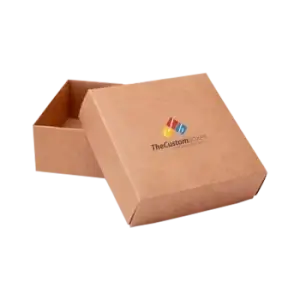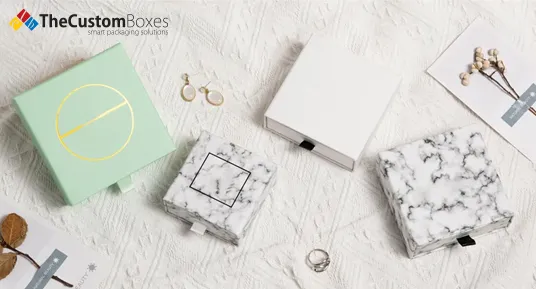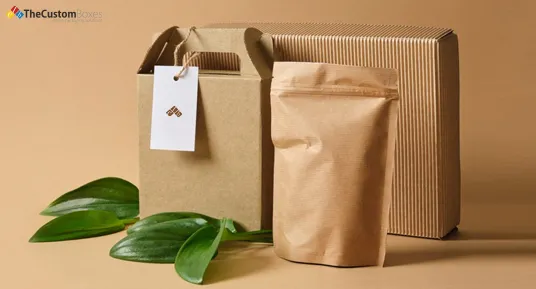The Complete Guide To Recyclable
Packaging Materials
In our comprehensive guide, you will learn all about recycling packaging materials and how we can recycle them. Our experts explain how you can make sustainable choices and how we support a greener future. Choose sustainability to earn nature lovers' trust and increase your brand's authenticity.

Recycling is about understanding where each piece belongs, not just tossing it in the blue bag. The problem of temperature-controlled packaging is challenging for people dedicated to sustainability. These custom packaging boxes send perishables like your weekly groceries or life-saving drugs. Thus, they need to be recycled using specific techniques.
Opening a package with foam and gel packs leaves you wondering if you recycle correctly. It's essential to know the proper recycling method. This guide will cover all aspects of recyclability and appropriate packaging material recycling. Without further ado, let's begin.
Significance Of Proper Recycling Of Packaging Materials

Proper recycling has a significant positive impact on the environment. Recycling one ton of paper can save about 17 trees, 26,500 liters of water, and enough energy to run the typical household for six months (Papierindustrie, 2021). Additionally, up to 95% less energy is needed to recycle aluminum than to create the same amount from raw materials (Deutsche Recycling, 2023).
Recycling plastic is yet another crucial sector. Only 32.5% of the 29.1 million tons of plastic garbage produced in the EU in 2020 was recycled (Europarl, 2018). Germany, a leader in recycling, outperformed the EU average of 40% that year with a recycling rate of 67.59% (Umweltbundesamt, 2023). Only 9% of all plastic generated is recycled. So, even with these advancements, plastic waste is still a global problem (Wir Lieben Recycling, 2023).
Recycling Right: What To Toss In The Bin And What To Drop Off
A variety of materials are used by the packaging business to distribute, display, and contain goods. Knowing what products and packaging may be recycled is crucial to reduce carbon footprints in the industry. Commonly recycled packaging materials include the following:
- Broken-down corrugated material
- Shredded newspaper
- Custom Paper packaging boxes
- Plastics that can be recycled, such as jugs, cups, and soda bottles
- Metal (such as aluminum trays or cans)
- Glass
Certain cities mandate that recyclable packaging and goods be transported to designated drop-off points. These items are processed at drop-off facilities at local stores. They usually don’t belong in your blue recycling bin. Commonplace packaging supplies that must be transported to drop-off locations include:
- Air pillows and bubble wrap (deflate)
- Shipping envelopes made of plastic (labels deleted)
- Food storage bags with a zipper
- Packaging made of plastic wrap (also known as the plastic overwrap that covers paper towel rolls)
- Different types of bags, such as dry cleaning bags, newspaper bags, and shopping bags.
Packaging Materials That Can't Be Recycled

Another essential recycling aspect is understanding what not to put in the trash can. Location and material-based restrictions influence what packaging and materials can be recycled and thrown out. Check your city's recycling regulations to learn what recycling packing materials are. Finding specific instructions for your materials is the easiest way to stay informed. Non-recyclable packaging materials include, for example:
- Polystyrene
- Cereal bags
- Crinkly plastics
- Biodegradable bags
- Bags of pre-washed salad mix
- Bags of frozen food
- Wrappers for candy bars
- Bags of chips
- Rings in six packs
After discussing what you should and shouldn't recycle, let's discuss how to recycle these packaging materials specifically.
Recycling Made Easy: Steps To A Sustainable Future

It is essential to adhere to appropriate recycling procedures to optimize the benefits of recyclable materials and guarantee their efficacy:
Know Your Local Recycling Laws: Stay Informed, Recycle Right
Learn what may and cannot be recycled in your neighborhood. Different places have different recycling regulations. For details on acceptable materials, sorting specifications, and collection dates, visit neighborhood websites or contact local authorities. Recycling regulations specific to your area can be found on websites such as Recycle by City.
Clean, Sort, Recycle: Make It Count
Food boxes should be rinsed and dried, and any excess residue should be removed. Paper, plastic, glass, and metal recyclables should be sorted into different bins. You can put everything in the same bin if your town recycles in a single stream. A "single-stream recycling" system simplifies individual recycling by combining several recycling streams into one.
Safe Disposal: How To Handle Hazardous Materials
Some products, such as batteries, electronic debris, and fluorescent light bulbs, are categorized as hazardous materials. They require specific recycling or disposal techniques. They should not be disposed of in ordinary trash cans or recycling bins.
According to estimates from the U.S. Environmental Protection Agency (EPA), "we can recover 35,000 pounds of copper, 772 pounds of silver, 75 pounds of gold, and 33 pounds of palladium for every million cell phones we recycle."
Contact the local waste management authority to learn about hazardous trash collection programs or approved drop-off places. Free internet resources, such as Earth911 Recycling Search, can help you find recycling facilities in your area.
Reduce, Reuse, Recycle: Make Sustainable Choices Everyday
Reducing consumption and reusing products whenever possible are even more effective approaches to reducing waste than recycling. To reduce single-use plastics, consider using your shopping bags, refilling water bottles, and choosing reusable and recycle packaging.
"We could save about 25 million trees each year if every American recycled just one-tenth of their newspapers," claims Town Recycling USA. Buy items manufactured from eco friendly packaging materials or from second-hand thrift stores to support the need for recycled goods.
Adopting a recycling mentality boosts the economy, fosters social well-being, and helps the environment. Recycling makes the earth healthier and cleaner for future generations.
Recycling Packaging Materials: What To Recycle And How

The many recyclable packaging materials and their recycling procedures will be covered in this section.
Packaging Made Of Paper And Paperboard
Paper and paperboard are the most common materials used in custom packaging boxes. Most paper packaging comes from beverages and food items. It is economical for transportation because it is lightweight and protects the goods. Packaging made of brown sustainable packaging and white paperboard can be readily recycled in the appropriate bin for paper goods. However, recycling coated or colorful packaging is more challenging. The dyed paper must be bleached to be completely recyclable, and the coating must be separated before recycling.
Recycling Paper And Cardboard
Paper and cardboard break down considerably more quickly than the other goods on this list. Cardboard takes about two months, whereas paper takes two to six weeks. Even though they decompose quickly, they are highly Eco-friendly packaging. So they don't end up in landfills. A cardboard baling machine is the first step in a recycling plant's process for recycling separated cardboard and paper. After being formed, the cardboard is shipped to paper mills, where it is unballed. Cardboard is combined with water to make pulp, which is then subjected to several filtering procedures to eliminate impurities and pollutants.
Packaging Made Of Glass
One of the most fragile materials used in packing is glass. A significant portion of glass packaging is used in the beverage industry. This is because the beer consumption is increasing. It can be embossed and debossed with designs and logos and is primarily used for jars or bottles. It takes a million years to decompose after being thrown away. It is 100% recyclable, reducing climate change and conserving natural resources. Only whole bottles and jars should be disposed of in the proper bin for glass recycling. Broken glass can embed in and harm other recyclable materials like cardboard or paper and break into smaller pieces that are challenging to recover.
Packaging Made Of Plastic
Plastic packaging is versatile and may be rigid or flexible, making it suitable for various items. The food and beverage sector needs to protect and maintain the quality of the food it contains. Numerous varieties of plastic packaging specialize in different forms of protection. Plastic products typically take a millennium to break down. Plastic bottles take 450 years to break down, but plastic grocery bags take 10–20 years. Although recycling plastic has reduced the environmental impact, 91% of plastics are burned or disposed of in landfills after only one use. Pure plastics are highly sought after for recycling, and more valuable plastics are recycled more frequently. The two most recycled polymers in the US are HDPE and PETE/PET.
Packaging Made Of Metal
Metal packaging is standard in the food sector and is used chiefly for cans made of aluminum and tin. Metal completely blocks out light, liquids, and gases. Labels and other items can be affixed on it. It can be embossed or debossed. Cans of soda have a tight-fitting lid and can be embellished. Metal is 100% eco friendly packaging and can be melted down to create new cans. Aluminum cans are among the materials that can be recycled the easiest. Since it is a "closed loop," the quality remains unaffected. With 70% recycled metal, aluminum cans are the most eco friendly product packaging boxes. It takes 95% less energy to make aluminum cans from recycled aluminum than from new aluminum. One ton of recycled aluminum saves ten cubic yards of landfill space, forty barrels of oil, and 14,000 kilowatt hours of energy.
Packaging Made Of Wood
Wood packaging serves as both a display and a means of protecting huge containers. This is used in many industries, such as the culinary, automotive, and chemical sectors, to support and preserve products. Custom eco-friendly boxes can be recycled into paper mills to produce different kinds of paper. They make boards, compost, animal bedding, and other products. Several wood drop-off locations handle reusing wood.
Final Thoughts
Recycling is integral to creating a sustainable future, but it must be done correctly. Being aware of this circumstance may lessen contamination in recycling streams and help create more effective recycling procedures. Remember that municipal recycling regulations can differ from one location to another. You now have the knowledge and resources necessary to make wise choices. Thanks to this comprehensive recycling guide, we can actively help protect our planet for future generations. If you want custom eco friendly packaging wholesale, contact The Custom Boxes.

















